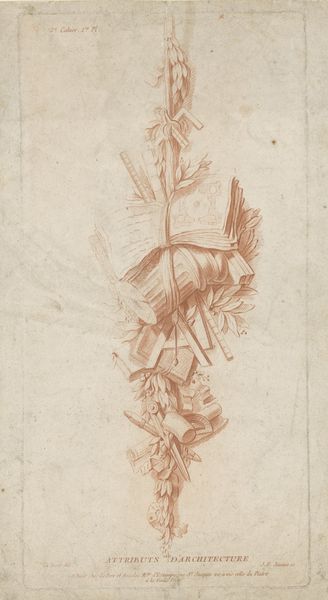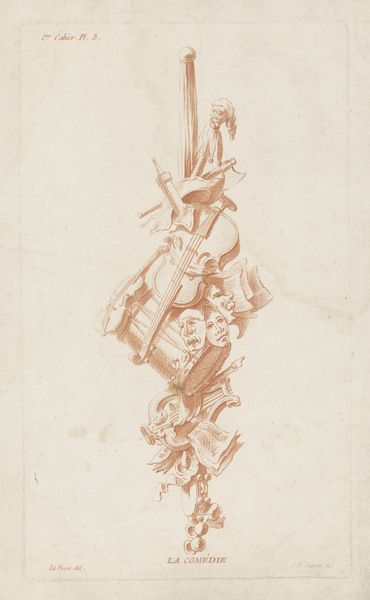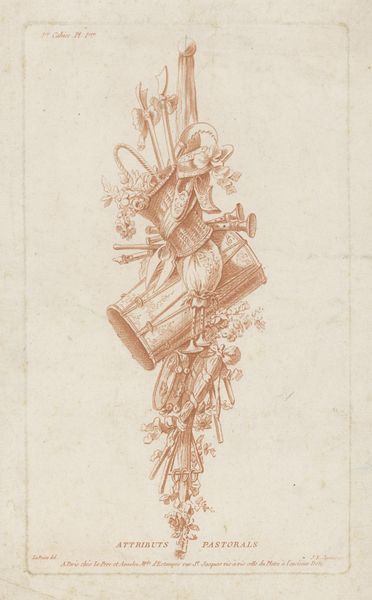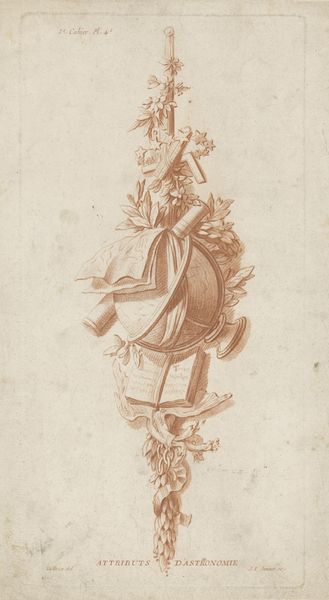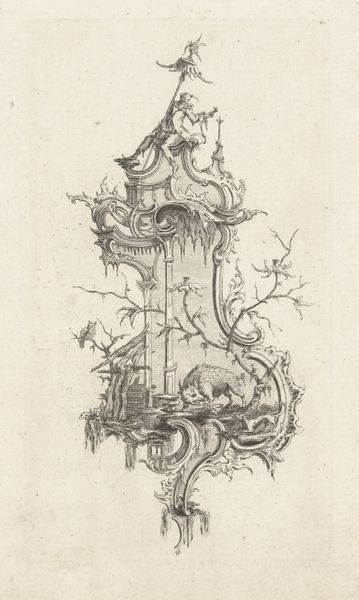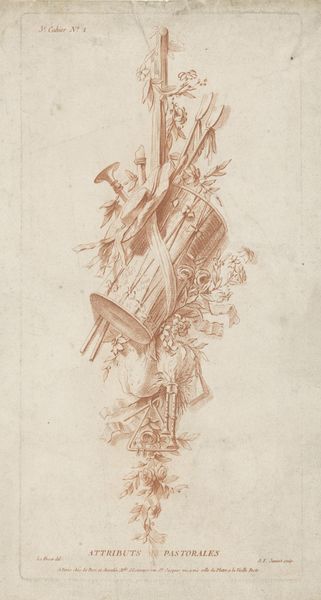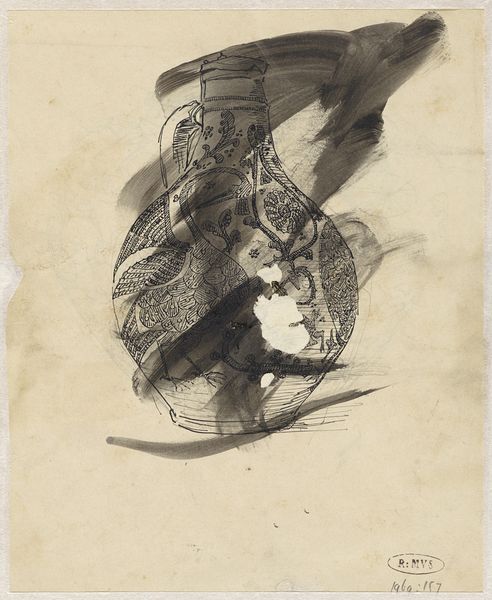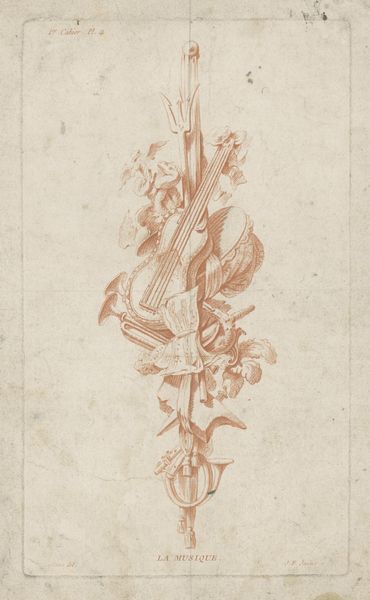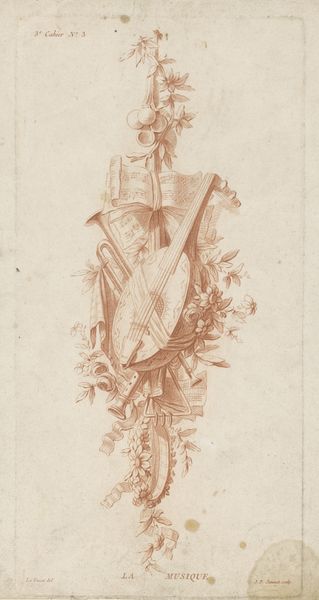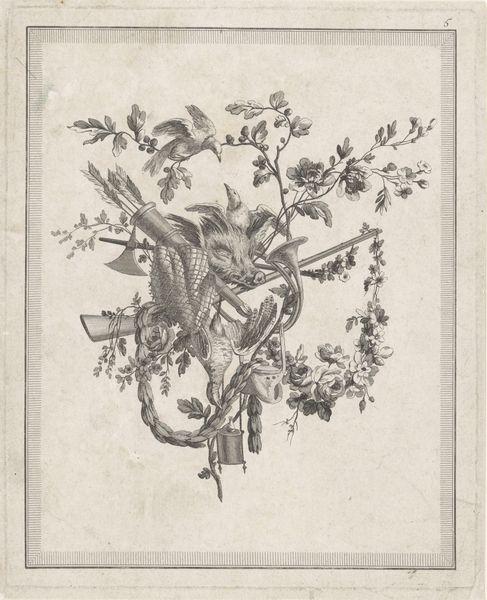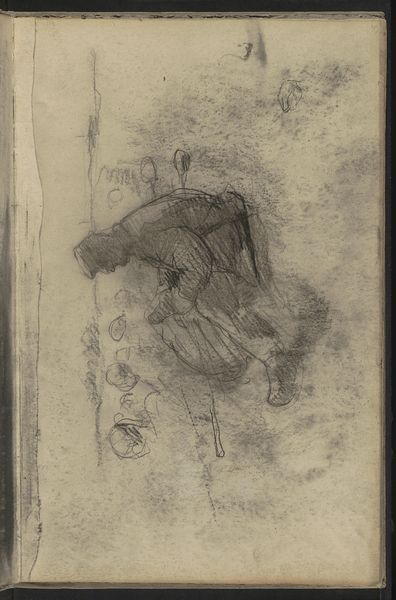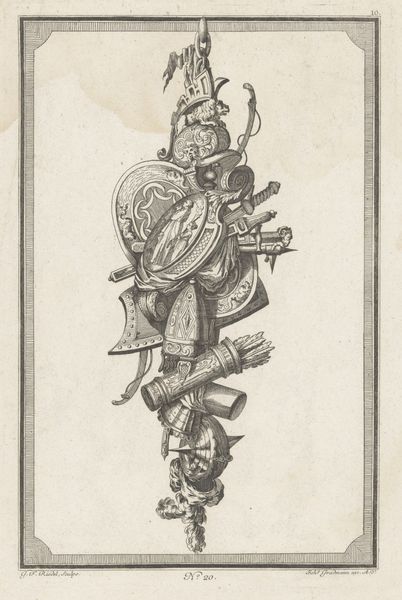
drawing, sculpture, pencil
#
drawing
#
neoclacissism
#
allegory
#
classical-realism
#
sculpture
#
pencil
#
academic-art
Dimensions: height 386 mm, width 192 mm
Copyright: Rijks Museum: Open Domain
Curator: At the Rijksmuseum, we're observing "Beeldhouwkunst" – "Sculpture" – a drawing in pencil, dating from 1772 to 1779, attributed to Jean François Janinet. Editor: It's strikingly pale, almost spectral, like a fading memory. And yet, there's such crisp detail in the rendering; the light feels carefully calibrated. Curator: Indeed. Note the allegory presented. The central figure, a sculpted bust with a classical profile, symbolizes the art of sculpture itself. The foliage could represent artistic growth, almost as if creativity emerges from nature. The lyre, also, alludes to harmony, crucial for artistic endeavours. Editor: Precisely! Janinet clearly understood line. Look at how the cross-hatching defines volume and creates the illusion of depth on a two-dimensional surface. Even in this monochromatic study, we understand the contrast between light and shadow is how to create the sculpted form. The execution shows technical prowess; it's architectural, too, in its balanced design. Curator: Absolutely, and considering the context of Neoclassicism, we see a return to classical ideals: reason, order, harmony. This work serves almost as a visual manifesto, idealizing sculpture. Also, look at that peculiar half-leg on the drawing, maybe it reflects sculpture’s historical reliance on capturing physical forms of people. Editor: It feels somewhat sentimental to me, as it does, also rather sterile as we see academic ideals of formal structure. A real statement piece in red chalk about the creative process itself. Curator: Yes, it is as if the artist invites us into the very thought process behind it. This approach serves as a means of preserving classical tradition and academic art in a drawing. Editor: So, beyond a simple depiction, it encapsulates an entire cultural ideology about how images are loaded, not just visually, but philosophically. A cultural time capsule about our ideals and pursuits of perfection.
Comments
No comments
Be the first to comment and join the conversation on the ultimate creative platform.
